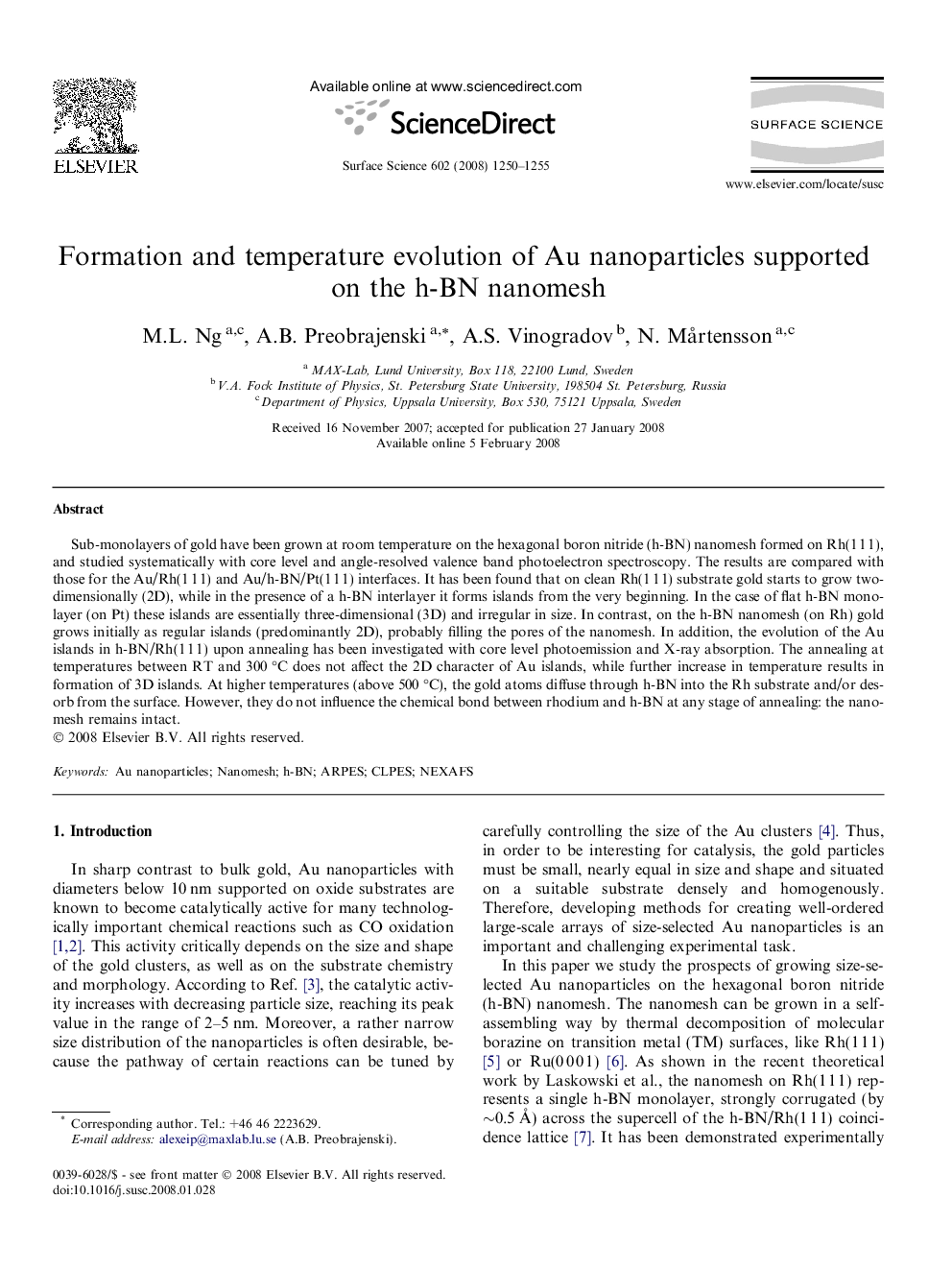| Article ID | Journal | Published Year | Pages | File Type |
|---|---|---|---|---|
| 5424975 | Surface Science | 2008 | 6 Pages |
Abstract
Sub-monolayers of gold have been grown at room temperature on the hexagonal boron nitride (h-BN) nanomesh formed on Rh(1 1 1), and studied systematically with core level and angle-resolved valence band photoelectron spectroscopy. The results are compared with those for the Au/Rh(1 1 1) and Au/h-BN/Pt(1 1 1) interfaces. It has been found that on clean Rh(1 1 1) substrate gold starts to grow two-dimensionally (2D), while in the presence of a h-BN interlayer it forms islands from the very beginning. In the case of flat h-BN monolayer (on Pt) these islands are essentially three-dimensional (3D) and irregular in size. In contrast, on the h-BN nanomesh (on Rh) gold grows initially as regular islands (predominantly 2D), probably filling the pores of the nanomesh. In addition, the evolution of the Au islands in h-BN/Rh(1 1 1) upon annealing has been investigated with core level photoemission and X-ray absorption. The annealing at temperatures between RT and 300 °C does not affect the 2D character of Au islands, while further increase in temperature results in formation of 3D islands. At higher temperatures (above 500 °C), the gold atoms diffuse through h-BN into the Rh substrate and/or desorb from the surface. However, they do not influence the chemical bond between rhodium and h-BN at any stage of annealing: the nanomesh remains intact.
Related Topics
Physical Sciences and Engineering
Chemistry
Physical and Theoretical Chemistry
Authors
M.L. Ng, A.B. Preobrajenski, A.S. Vinogradov, N. MÃ¥rtensson,
